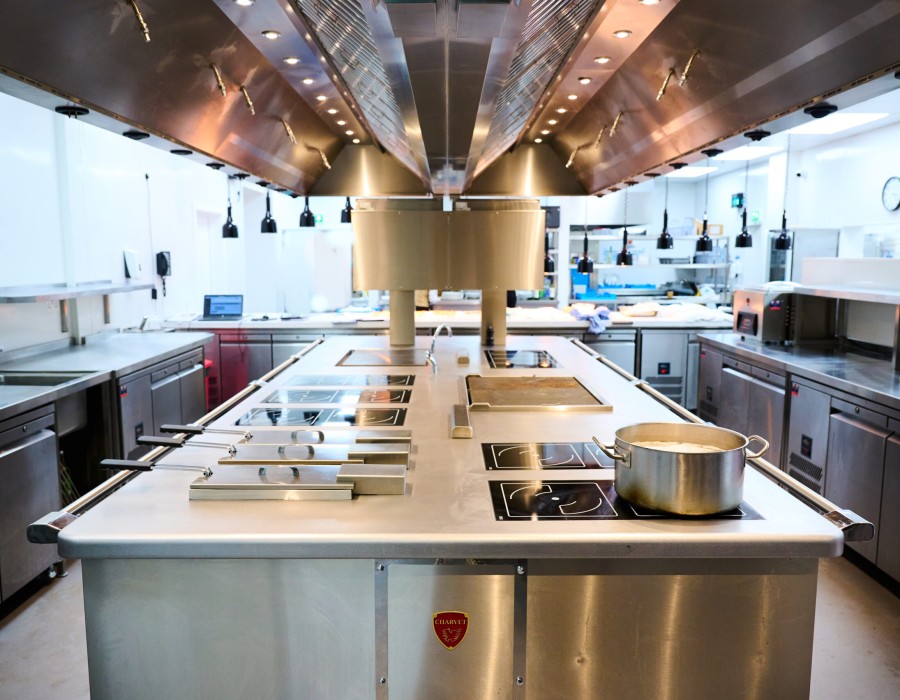Introduction
Norway Commercial Cooking Equipment Market is witnessing significant growth due to evolving consumer preferences, the rise of modern cooking techniques, and increased investments in the food service sector. Among the companies that are leading this market is Culina, a brand known for its high-quality kitchen equipment. Culina’s strategy and emerging innovations have positioned it as a prominent player in Norway’s competitive commercial cooking industry.
This article delves into the company's strategic approach, technological innovations, and how these developments are shaping the future of the market.
Culina’s Strategic Approach to the Market
Culina has focused on expanding its market share in Norway through a combination of strategic initiatives. The company emphasizes customer-centric innovation, offering equipment designed to cater to the specific needs of commercial kitchens, such as energy efficiency, ease of use, and durability. By conducting regular market research, Culina ensures that its products align with the evolving demands of the food service industry, which includes restaurants, hotels, and catering businesses.
A significant aspect of Culina’s strategy is its commitment to sustainability. As Norway places a strong emphasis on environmental protection, Culina has been at the forefront of adopting energy-efficient technologies. This not only helps reduce operational costs for businesses but also supports Norway's ambitious sustainability goals. Moreover, Culina’s focus on providing superior after-sales service has helped build long-term relationships with clients, further strengthening its position in the market.
Emerging Innovations in Commercial Cooking Equipment
Innovation plays a crucial role in Culina’s strategy. The company continuously invests in research and development to bring new technologies to the market, which are aligned with the latest trends in commercial kitchen operations.
One of the key innovations is the integration of smart kitchen technologies into their equipment. Many of Culina’s products now feature digital interfaces that allow chefs and kitchen staff to control cooking temperatures, cooking times, and other essential functions remotely. This integration not only improves efficiency but also ensures consistency and quality in food preparation.
Culina has also embraced the trend of smart kitchen appliances, such as advanced ovens, cooktops, and refrigerators, which offer real-time monitoring and diagnostics. These smart appliances help commercial kitchens optimize energy usage, improve performance, and reduce food waste. The rise of the Internet of Things (IoT) has been a game-changer, allowing Culina to create equipment that is highly connected and automated, enabling operators to monitor and adjust their equipment from anywhere.
Focus on Energy Efficiency and Sustainability
As environmental sustainability continues to be a priority for both consumers and businesses, Culina has prioritized energy-efficient commercial cooking equipment. The company designs products that minimize energy consumption without compromising on performance. This approach is particularly relevant in the Norwegian market, where businesses are increasingly focused on reducing their carbon footprint and adhering to environmental regulations.
Culina’s energy-efficient designs, such as induction cooktops, steamers, and convection ovens, help commercial kitchens lower their energy bills and reduce environmental impact. These products are equipped with features such as programmable cooking modes, automatic shut-off functions, and efficient heat distribution systems. The brand’s commitment to sustainability not only helps its clients but also supports Norway’s broader environmental initiatives.
Market Developments and Trends
The commercial cooking equipment market in Norway has been undergoing significant developments. Several trends have emerged in recent years that reflect the changing demands of the food service industry.
One of the most notable trends is the increasing demand for compact and multifunctional kitchen equipment. With many foodservice operators focusing on maximizing the use of limited kitchen space, equipment that serves multiple functions is becoming increasingly popular. Culina has responded to this trend by designing products that offer versatility, such as combination ovens that can bake, steam, and roast.
Another key development is the growing interest in health-conscious cooking equipment. With the rise in demand for healthier food options, commercial kitchens are increasingly investing in equipment that allows them to cook with less fat, oil and added ingredients. Air fryers, steam ovens, and low-fat grilling equipment are just a few examples of innovations that meet this demand.
Conclusion
Culina’s strategy in the Norwegian commercial cooking equipment market revolves around innovation, energy efficiency, sustainability, and customer satisfaction. Through continuous investment in research and development, the company has introduced cutting-edge technologies and features that cater to the modern demands of commercial kitchens. As the market continues to evolve, Culina is well-positioned to lead the way with its energy-efficient, multifunctional, and smart cooking solutions. With a focus on sustainability and technological advancements, Culina is set to shape the future of commercial cooking in Norway, driving innovation and meeting the ever-changing needs of the foodservice industry.





Comments